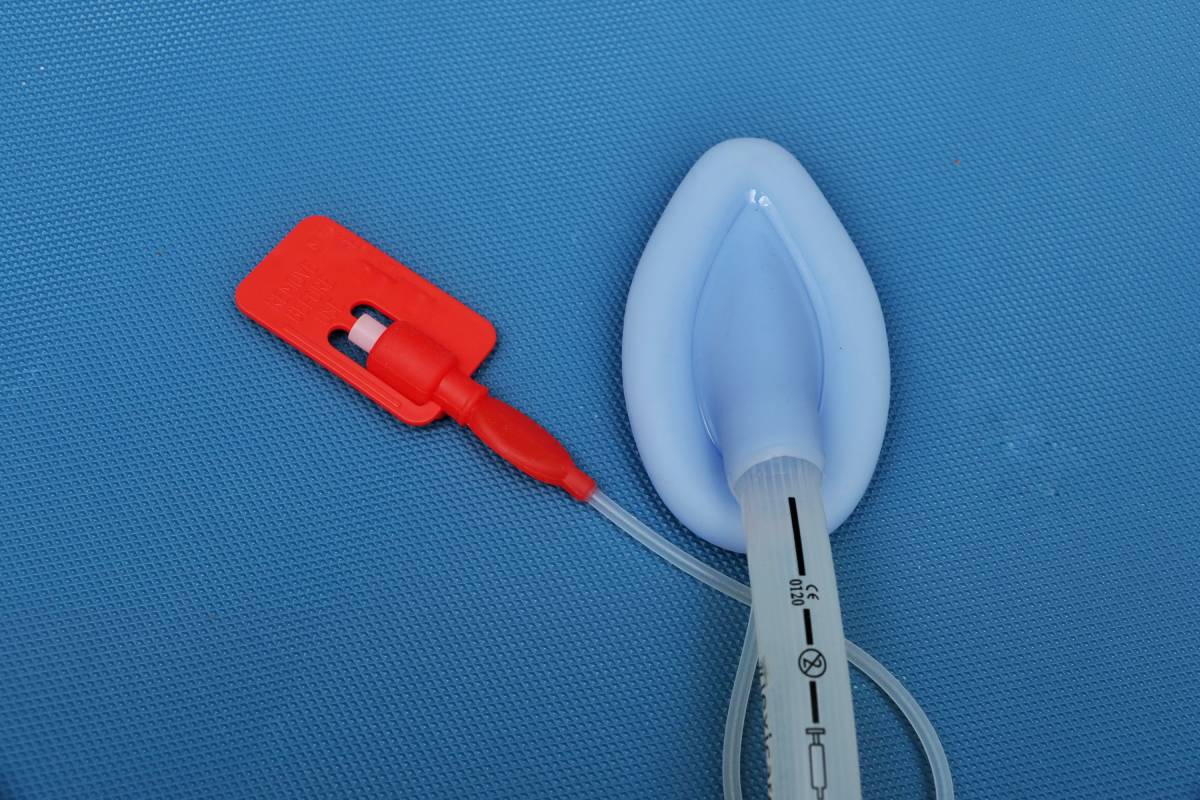Laryngeal Mask Airway Removal

Laryngeal mask airway (LMA) facilitates surgeries by providing high airtightness, low stimulation, and easier management of the supraglottic airway [1]. It is widely used to control the airways of pediatric surgical patients [2]. Unfortunately, laryngeal mask airway removal can result in adverse airway events, so anesthetic choice and timing must be carefully considered to prevent such occurrences [1].
Generally, isoflurane and sevoflurane are the anesthetic agents of choice for LMA [3]. This is because they tend to promote faster recovery [3]. However, other agents could reduce the risk of adverse airway-related events and thus merit consideration for use alongside LMA. One such agent is desflurane. Although desflurane does not permit as fast a recovery as other inhaled anesthetic agents, its pharmacokinetic qualities and rapid metabolism can render it appropriate for use in low-flow systems [3]. To address desflurane’s longer laryngeal mask airway removal times, medical teams can administer it in an entropy-guided low-flow context [3]. This technique has demonstrably promoted lower consumption of anesthetics and shorter removal time compared with minimal alveolar concentration-guided anesthesia [3].
Other variations on anesthetic practice that promote better outcomes include the combined use of propofol with isoflurane, or dexmedetomidine with sevoflurane [2, 4]. Kumar and colleagues found that deep anesthesia via a propofol-isoflurane combination resulted in a lower incidence of teeth clenching and airway obstruction, and a shorter emergence duration compared to isoflurane alone [2]. On the other hand, Bhat and colleagues found that dexmedetomidine (1 µg /kg) with sevoflurane decreased emergence agitation and promoted smoother removal of LMA than normal saline or lower dose dexmedetomidine (0.5 1 µg /kg) with sevoflurane [4].
As for timing, physicians looking to remove a patient’s laryngeal mask airway generally contemplate two options: removal during deep anesthesia, or removal following emergence [2]. Significant challenges are associated with each possibility. Removal under deep anesthesia risks events such as glossocoma and pharyngalgia, while removal in the awake state can lead to PACU complications and coughing [1].
Several experiments have sought to determine which option is preferable in different contexts. Sun et al conducted a randomized controlled trial consisting of children undergoing squint correction operations with general anesthesia [1]. They measured adverse airway events such as glossocoma, pharyngalgia, coughing, and laryngeal spasm rates [1]. When lidocaine cream was applied to the LMA cuff prior to insertion, removal in the awake state was generally preferable to deep anesthesia removal [1]. This was also true when hydrosoluble lubricant had been applied to the LMA instead of lidocaine cream [1].
Ramgolam et al found that tonsillectomy patients aged 0 to 16 years old exhibited no significant difference in adverse events overall, regardless of whether removal occurred while they were under deep anesthesia or awake [5]. However, subjects who experienced deep removal were more likely to suffer respiratory adverse events [5]. In a larger pool of subjects, this could mean that deep anesthesia laryngeal mask airway removal results in increased costs, hospital stays, and postsurgical adverse events [6].
On a parallel note, Asahi and colleagues narrowed their focus to pediatric patients with special needs [7]. These patients require extra consideration, given their difficulty complying with instructions during removal [7]. The 80 patients were divided into two groups: removal during the pre-awake state and the deep anesthesia state [7]. The pre-awake states exhibited gross body movement, more clenching, and difficult ventilation, suggesting that deep anesthesia may be preferable for this subsection of patients [7].
The optimal LMA removal technique requires a complex inquiry into anesthetic agents, timing, and patients’ individual abilities to comply with instructions. By accounting for these factors, physicians can provide for easier removal and fewer adverse airway events.
References
[1] R. Sun et al., “The impact of topical lidocaine and timing of LMA removal on the incidence of airway events during the recovery period in children: a randomized controlled trial,” BMC Anesthesiology, vol. 21, no. 10, p. 410-417, January 2021. [Online]. Available: https://doi.org/10.1186/s12871-021-01235-7.
[2] D. Kumar et al., “Isoflurane alone versus small dose propofol with isoflurane for removal of laryngeal mask airway in children-a randomized controlled trial,” Journal of Pakistan Medical Association, vol. 69, no. 11, p. 1596-1600, November 2019. [Online]. Available: https://doi.org/10.1186/s12871-021-01235-7.
[3] S. Mishra et al., “Effect of entropy-guided low-flow desflurane anaesthesia on laryngeal mask airway removal time in children undergoing elective ophthalmic surgery – A prospective, randomised, comparative study,” Indian Journal of Anaesthesia, vol. 63, no. 6, p. 485-490, June 2019. [Online]. Available: http://doi.org/10.4103/ija.IJA_237_19.
[4] R. Bhat et al., “Study of dose related effects of dexmedetomidine on laryngeal mask airway removal in children -a double blind randomized study,” Anaesthesia, Pain & Intensive Care, vol. 22, no. 3, p. 368-373, July-September 2018. [Online]. Available: https://apicareonline.com/index.php/APIC/article/view/74.
[5] A. Ramgolam et al., “Deep or awake removal of laryngeal mask airway in children at risk of respiratory adverse events undergoing tonsillectomy—a randomised controlled trial,” British Journal of Anaesthesia, vol. 120, no. 3, p. 571-580, March 2018. [Online]. Available: https://doi.org/10.1016/j.bja.2017.11.094.
[6] M. Oofuvong et al., “Excess costs and length of hospital stay attributable to perioperative respiratory events in children,” Anesthesia and Analgesia, vol. 120, no. 2, p. 411-419, February 2015. [Online]. Available: https://doi.org/10.1213/ANE.0000000000000557.
[7] Y. Asahi et al., “Excess costs and length of hospital stay attributable to perioperative respiratory events in children,” Journal of Oral and Maxillofacial Surgery, Medicine, and Pathology, October 2021. [Online]. Available: https://doi.org/10.1016/j.ajoms.2021.09.004.